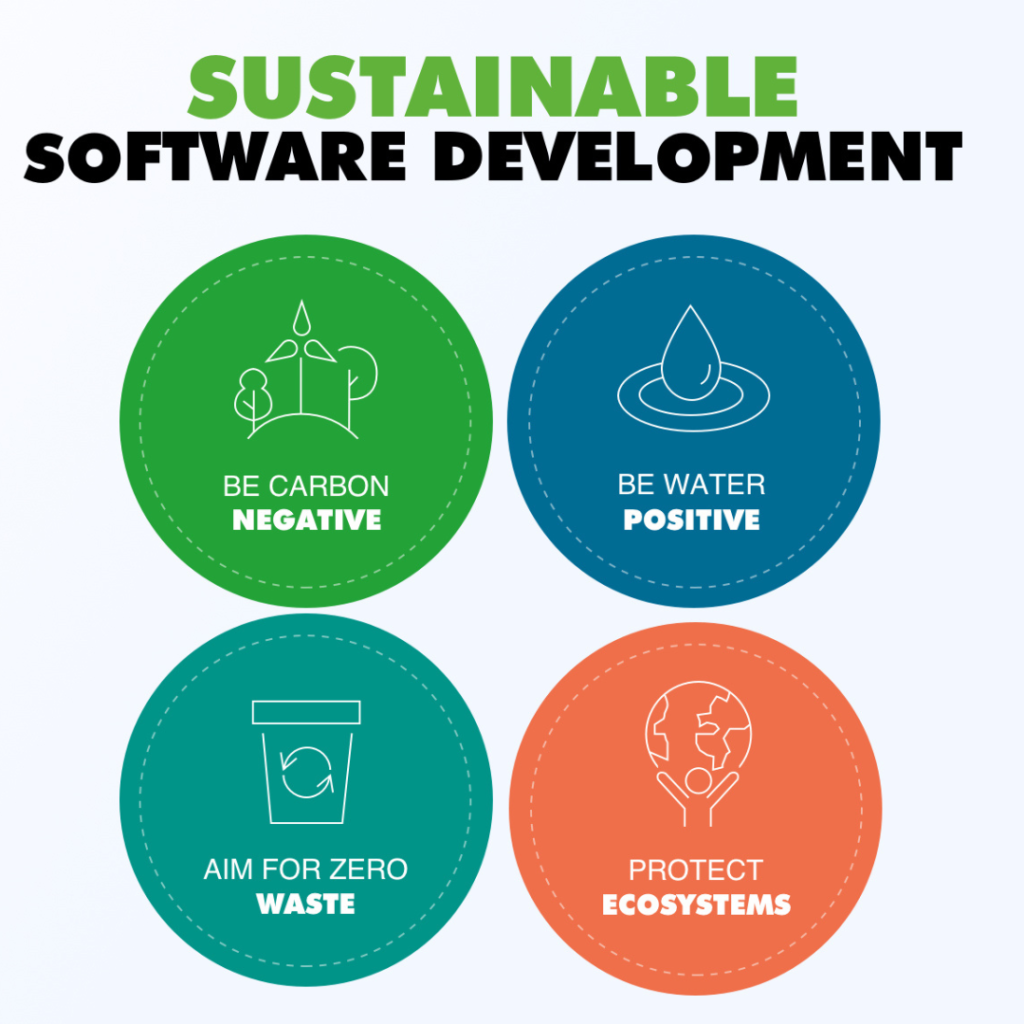Introduction:
Software development is no exception, as the global community recognizes the urgent need for solutions. With the development of technology and the increase in digitalization, software applications have seamlessly entered almost every aspect of our daily lives. Therefore, it is not surprising that the importance of sustainability in software development is increasing.
So what is sustainable software development? From an overall perspective, it focuses on increasing efficiency and effectiveness in a profitable and ethical way, without harming or depleting the environment.
There are many factors that contribute to the outcome of sustainable software development. Here are some
Energy savings: It takes a lot of energy to run servers, computers, and other electronic equipment involved in software development and end use. Focusing on sustainability, developers are trying to create software that optimizes resource usage and thus reduces energy consumption.
Reduce e-waste: Improper disposal of e-waste (or e-waste) has become a global problem. A sustainable approach to software development is to emphasize reusable components, thus reducing the need for constant innovation and therefore reducing energy consumption.
Social Responsibility: With climate change and environmental degradation becoming a real threat, using sustainable practices demonstrates a business’s commitment to consummate health of all people.
Sustainable Software Development Methods
Fortunately, there are many methods that can help achieve sustainability in software development, including the following:
Green Coding: This involves writing code in a way that uses fewer resources and therefore reduces energy consumption. This is not only good for the environment, but also saves developers money and time.
Good process: Using a good development process can produce more stable software. For example, agile methods emphasize iterative development, thus promoting waste reduction and continuous improvement based on sustainable development principles.
Sustainable design: Developers can integrate sustainability at the design level by considering lifecycle analysis, energy efficiency, and software longevity.
Maintenance and updates: Focusing on maintaining and updating existing applications rather than developing new software can reduce energy waste and energy consumption.
The future of software development is sustainability
As awareness of sustainable development continues to grow, its integration with development software is likely to increase as well. Frameworks such as the GREENSOFT model are recognized because they offer a path for sustainable software development.
The importance of security in software development represents a balance. It’s about optimizing software applications to meet current needs while keeping future generations and the health of the planet in mind. As we enter the era of environmental awareness, sustainable software development is not a trend or an option, but a necessity.
In this regard, using sustainable practices in software development is not only about results and competitive positions; It’s about defining the role we want technology to play in securing the future. The global call for sustainable software development provides just that; A solid foundation for a future where technology works for people, without distorting the nature of capital to meet the needs of future generations.
Conclusion:
Sustainable software development, when properly integrated, can create superior application performance while protecting our environment. Therefore, for the benefit of people and the world we live in, manufacturers, organizations and society in general must recognize and accept the concept of sustainability in repair software development.

